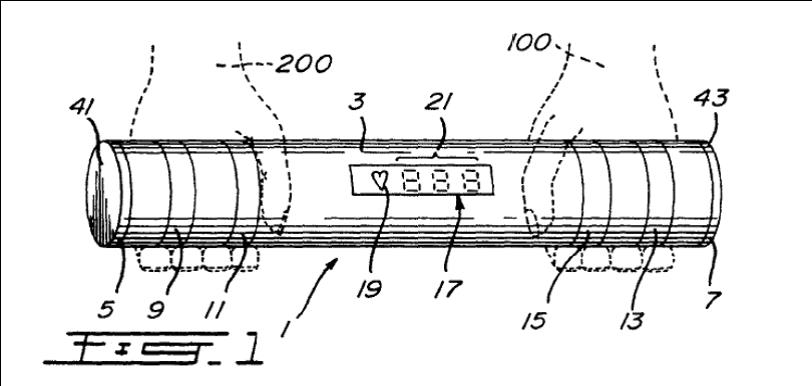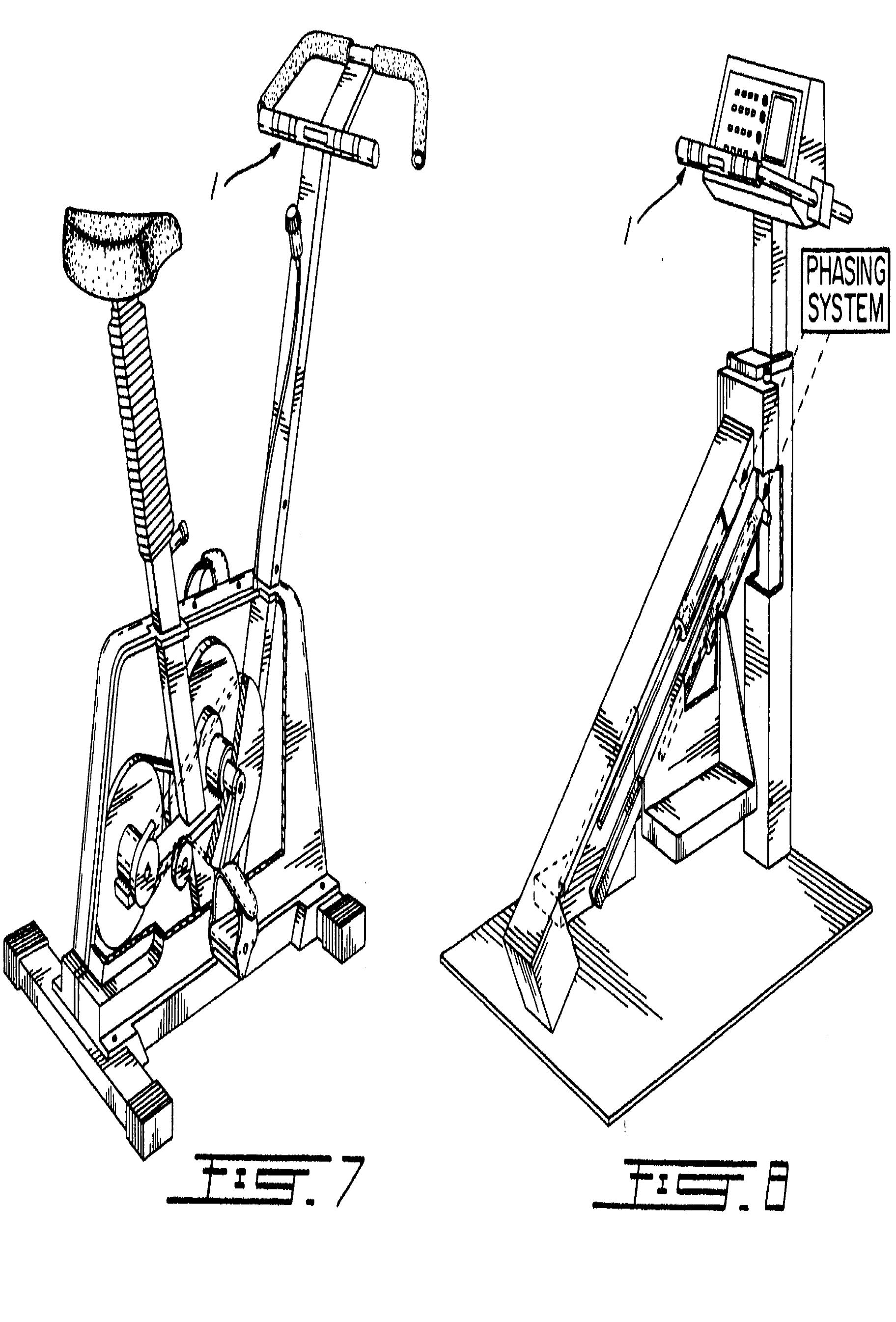CAFC Reverses Trial Court’s Indefiniteness Ruling
| May 9, 2013
Biosig Instruments v. Nautilus
April 26, 2013
Panel: Wallach, Schall and Newman. Opinion by Wallach. Concurrence by Schall.
Summary
The Court of Appeals for the Federal Circuit rarely finds patent claims to be so indefinite that the they are invalid under 35 U.S.C. § 112, ¶ 2. This historical proclivity was on display last in the CAFC’s decision in Biosig Instruments V. Nautilus. There, the Court reversed a summary judgment of invalidity for indefiniteness, concluding that the claim was “amenable to construction” and not ‘insolubly ambiguous.”
Claimed Invention:
Biosig’s U.S. Patent No. 5,337,753 claims heart rate monitor associated with an exercise apparatus. The patent explains that EMG signals are given off by skeletal muscles when users move their arms or squeeze the monitor with their fingers. EMG signals are of the same frequency range as electrical signals generated by the heart, ECG signals; EMG signals therefore mask ECG signals making it difficult to measure heart rate during exercise. The claimed monitor overcomes this problem by eliminating EMG noise signals during exercise.
Representative claim 1 recites:
A heart rate monitor for use by a user in association with exercise apparatus and/or exercise procedures, comprising:
an elongate member;
electronic circuitry including a difference amplifier having a first input terminal of a first polarity and a second input terminal of a second polarity opposite to said first polarity;
said elongate member comprising a first half and a second half;
a first live electrode and a first common electrode mounted on said first half in spaced relationship with each other;
a second live electrode and a second common electrode mounted on said second half in spaced relationship with each other;
said first and second common electrodes being connected to each other and to a point of common potential . . . .
(Emphasis added).
The patent includes the following drawing that illustrates the monitor that is grasped by the exercising in use. 
Two other drawings show the attachment of the monitor to the exercise device.
Trial Court:
The trial judge granted summary judgment that the patent was invalid under § 112, ¶ 2 for being indefinite, concluding that the meaning of “spaced relationship” was unclear.
First, the trial judge construed “spaced relationship” to mean that “there is a defined relationship between the live electrode and the common electrode on one side of the cylindrical bar and the same or a different defined relationship between the live electrode and the common electrode on the other side of the cylindrical bar.”
He then concluded that “a spaced relationship did not tell me or anyone what precisely the space should be . . . .Not even any parameters as to what the space should be … Nor whether the spaced relationship on the left side should be the same as the spaced relationship on the right side.”
CAFC:
General Legal Points:
- “A claim is indefinite only when it is ‘not amenable to construction’ or ‘insolubly ambiguous.’” (Emphasis added).
- “General principles of claim construction apply when determining indefiniteness.”
- “When a ‘word of degree’ is used, the court must determine whether the patent provides “some standard for measuring that degree.”
- “When a claim limitation is defined in ‘purely functional terms, a determination of whether the limitation is sufficiently definite is “highly dependent on context.”
- “If the meaning of the claim is discernible, even though the task may be formidable and the conclusion may be one over which reasonable persons will disagree, we have held the claim sufficiently clear to avoid invalidity on indefiniteness grounds.”
- “Provided that the claims are enabled, and no undue experimentation is required, the fact that some experimentation may be necessary to determine the scope of the claims does not render the claims indefinite.”
Here, the CAFC was unequivocal in its holding that the claim was not indefinite and that the judgment of the trial judge should be reversed.
On the question of claim construction, the CAFC determined from the specification certain simple limits on the meaning of “spaced relationship,” creating an upper limit and a lower limit.
[The] electrode cannot be greater than the width of a user’s hands because claim 1 requires the live and common electrodes to independently detect electrical signals at two distinct points of a hand. On the other hand, it is not feasible that the distance between the live and common electrodes be infinitesimally small, effectively merging the live and common electrodes into a single electrode with one detection point.
(Emphasis added). Moreover, the function of the electrode positioning, mentioned in the claims, the specification, and the prosecution history – to equalize the EMG signals from the right and the left hands so that they offset each other and do not affect measurement of ECG values – must be achieved to accomplish the object of the claimed invention, elimination of signal noise. Further, this offset or cancelation is measureable by those skilled in the art.
Accordingly, for any given monitor, it is possible for one skilled in the art to determine whether the offset is achieved and thus whether the “spaced relationship” limitation is satisfied. Given this functional understanding, there is no need for a quantitative measure as required by the trial judge. The claims comply with the definiteness requirement.
Judge Schall’s Concurrence:
Judge Schall agreed with the outcome, including the conclusions that “spaced relationship” is “amenable to construction,” and that the specification creates certain inherent parameters so that the construction is one of “defined relationships.”
Judge Schall, however, would not have resorted to the functional analysis of the panel majority because that functionality is not recited in the limitations that contains the “spaced relationship” phrase.
Concluding Thought:
The CAFC goes to great lengths to construe claim limitations and rarely finds that a claim is invalid as indefinite.
Where it does, the claim limitation typically recites a specific property, usually in numerical terms, but (1) the disclosure does not disclose the intended test for measuring that property, and (2) there are multiple tests known in the art that give different values for a given embodiment.
Tags: claim construction > indefiniteness



